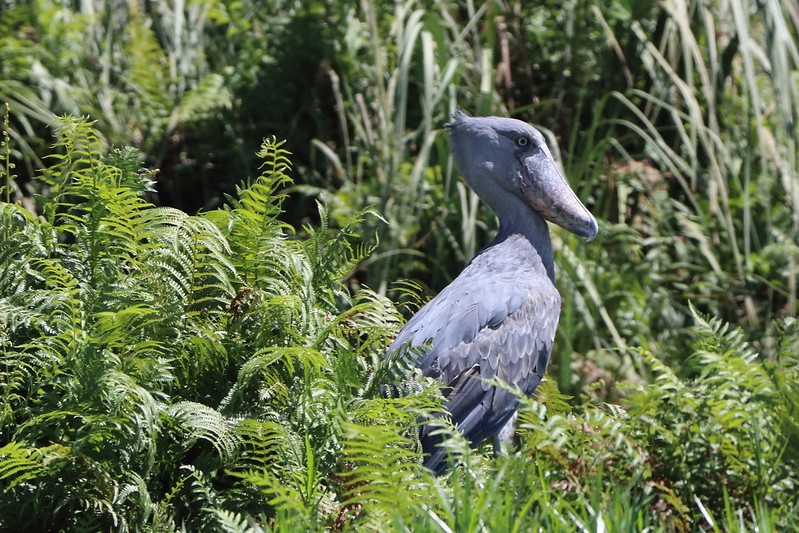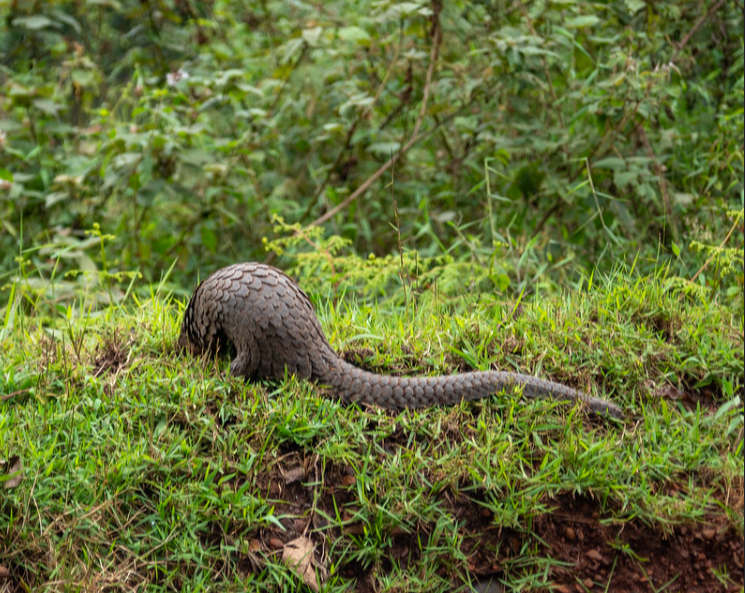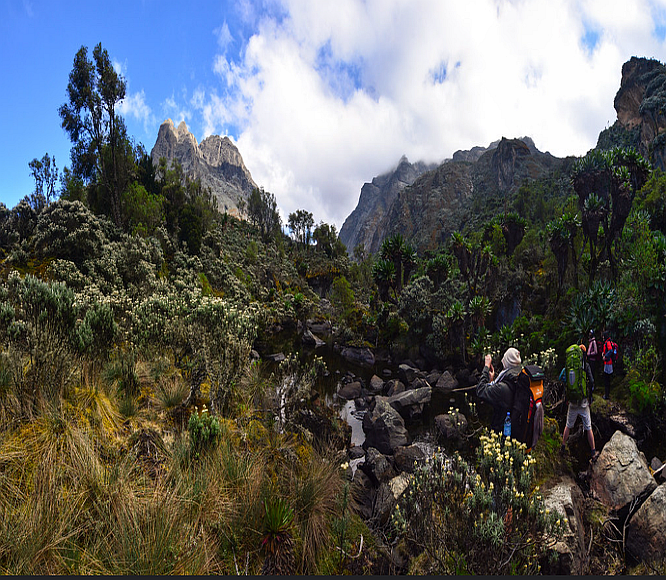Bird Watching Safaris in Uganda
Uganda, a haven for birding enthusiasts, offers an unparalleled bird watching safari experience, teeming with over 1,000 species, including several endemics. This biodiversity hotspot, often hailed as the “Pearl of Africa,” boasts an array of ecosystems from lush rainforests to expansive wetlands, each providing a sanctuary for different bird species. Key destinations include the renowned Bwindi Impenetrable Forest, home to the Albertine Rift endemics; Mabamba Bay, famous for its elusive Shoebill Storks; and the diverse habitats of Queen Elizabeth National Park, which hosts over 600 bird species. Kibale Forest is another gem, celebrated not just for its primate population but also for its vibrant birdlife. These areas, alongside others like the Rwenzori Mountains and Lake Mburo National Park, offer rich opportunities for both novice and seasoned birdwatchers to explore and enjoy Uganda’s avian treasures through guided tours. Each safari promises unique encounters with some of the world’s most exotic and rare birds, making Uganda a top destination for a spectacular birding adventure.
Popular Bird watching Tours

Explore diverse bird species on a 2-day Uganda safari, featuring guided tours in lush habitats like Bwindi and Mabamba.

3 days of bird watching in Lake Mburo, spotting unique species amidst beautiful landscapes and tranquil waters.

Embark on a four-day birding adventure in Murchison Falls, observing rare birds and stunning wildlife in diverse habitats.

Experience seven days of comprehensive birding in Murchison Falls, exploring rich ecosystems and diverse avian life.
Uganda Birding Destinations
Uganda is a paradise for birdwatchers, boasting an impressive list of over 1,000 bird species, some of which are among the rarest on the continent. Each of Uganda’s national parks offers unique birding opportunities, making the country a must-visit destination for avian enthusiasts. Here is a guide to the best birding destinations across all of Uganda’s national parks.
Murchison Falls National Park
Murchison Falls, Uganda’s largest national park, provides a habitat for more than 450 bird species. The park’s diverse landscapes, which include savannah, riverine forest, and wetlands, are home to the rare Shoebill stork, the Goliath heron, and the Grey-crowned crane, Uganda’s national bird. Birdwatchers can enjoy both game drives and boat trips on the Nile to view a variety of waterfowl and raptors.
Queen Elizabeth National Park
With over 600 bird species, Queen Elizabeth National Park is one of the best birding destinations in Africa. Key areas within the park include the Mweya Peninsula, which offers excellent savannah birding, and the extensive wetlands around Lake George. Species such as the African skimmer, Pink-backed pelican, and Papyrus gonolek are often spotted here, along with a variety of eagles and vultures.
Bwindi Impenetrable National Park
Famous for mountain gorillas, Bwindi also supports nearly 350 bird species, including 23 Albertine Rift endemics. The park’s dense forests are prime birding spots, with species such as the African green broadbill, Chapin’s flycatcher, and the Shelley’s crimsonwing. Birding in Bwindi is a challenging yet rewarding experience due to the dense foliage and rugged terrain.
Kibale National Park
This forested park is renowned for its primate population but also boasts around 375 bird species. Birding here can be spectacular, with sightings of the Green-breasted pitta, African pitta, and Red-faced woodland warbler. The Bigodi Wetland Sanctuary, just outside the park, is particularly rich in birdlife, including the Great blue turaco and Black-crowned waxbill.
Rwenzori Mountains National Park
Known as the “Mountains of the Moon,” the Rwenzori is a great destination for high-altitude birding. Approximately 217 bird species can be found here, including several Albertine Rift endemics like the Rwenzori turaco and Montane sooty boubou. The unique montane vegetation provides a dramatic backdrop for birdwatching.
Lake Mburo National Park
Though smaller than Uganda’s other national parks, Lake Mburo is home to more than 315 bird species. It offers a mix of acacia woodland and wetland habitats, attracting birds such as the African finfoot, Brown-chested lapwing, and the elusive African fish eagle. Boat trips on Lake Mburo are particularly good for spotting kingfishers and other water birds.
Semuliki National Park
Bordering the Congo, this lowland rainforest park is known for its Central African species, extending into East Africa. Over 400 species, including the Congo serpent eagle and Nkulengu rail, can be observed in Semuliki, making it a unique birding spot with a blend of East and Central African bird species.
Each of these parks offers something unique, from forested canopies to open savannahs and mountainous terrains, providing habitats for a diverse range of bird species. Whether you are a novice birdwatcher or an experienced ornithologist, Uganda’s national parks provide ample opportunities to observe some of Africa’s most spectacular birds in their natural environments.
Frequently Asked Questions
Which national parks in Uganda are best for bird watching?
Uganda is a premier bird watching destination with several national parks offering exceptional opportunities. Bwindi Impenetrable Forest is renowned for its Albertine Rift endemics. Queen Elizabeth National Park boasts over 600 species, including spectacular water birds along its lakes. Murchison Falls National Park offers great sightings of the Shoebill Stork and diverse savannah birds. Kibale Forest is perfect for forest species and the Rwenzori Mountains attract birders with their unique montane species. Each park provides a distinct and rich birding experience.
What Makes Uganda Unique for Bird Watching
Unique Bird Watching in Uganda
Uganda stands out as a bird watching haven in East Africa due to its exceptional biodiversity and unique geographical features. Spanning a variety of habitats—from dense rainforests and montane regions to vast wetlands and savannahs—Uganda supports over 1,000 bird species, making it one of the richest birding destinations on the continent.
Biodiversity Hotspot
The country's location within the Albertine Rift Valley contributes to its high number of endemic species, which are not found anywhere else in East Africa. This includes birds like the African Green Broadbill and the Shelley’s Crimsonwing.
Varied Habitats
Uganda’s diverse ecosystems facilitate year-round birding opportunities. Each habitat provides a home to different bird species, allowing birders to see a spectacular variety of birds in relatively close proximity. This unique combination of biodiversity and accessible natural beauty makes Uganda an unrivaled destination for bird enthusiasts in East Africa.
Do I need a guide for bird watching in Uganda?
Necessity of a Guide for Bird Watching in Uganda
While it's not mandatory to have a guide for bird watching in Uganda, employing one is highly recommended for several compelling reasons.
Enhanced Bird Spotting
Guides are invaluable for their expert knowledge of local bird species, their calls, and behaviors. They are adept at spotting and identifying birds that are often hidden or camouflaged in dense foliage. A guide can significantly enrich your bird watching experience by providing insights and ensuring you see a wider variety of species.
Navigation and Safety
Uganda's national parks and reserves can be vast and complex to navigate. A guide not only helps in finding the best spots for bird watching but also ensures your safety in remote areas. They are trained to handle wildlife encounters and are familiar with the terrain, which is particularly important in less accessible areas.
Employing a local guide also supports the community and contributes to conservation efforts, making it a beneficial choice for both birders and the environment.
What kind of accommodation is available on bird watching safaris?
Accommodation Options on Bird Watching Safaris
Accommodations on bird watching safaris in Uganda cater to a wide range of tastes and budgets, ensuring comfort and convenience for all travelers.
Diverse Accommodation Choices
From rustic camping sites to luxurious lodges, Uganda offers a variety of lodging options. Eco-lodges and tented camps are popular in many national parks, providing an immersive nature experience without sacrificing modern comforts. These accommodations are often strategically located to maximize wildlife and bird watching opportunities right from your doorstep.
Community Guesthouses and Resorts
For those seeking a more cultural experience, community guesthouses are available, often run by local communities. These offer basic amenities and a chance to support local economies directly. Additionally, upmarket resorts offer luxury amenities, including spas, fine dining, and guided nature walks, combining bird watching with relaxation and luxury.
Whether you prefer the basics or a bit of pampering, Uganda’s range of accommodations ensures that every birder finds a suitable base for their safari.
What is the best time of year for a bird watching safari in Uganda?
Optimal Bird Watching Seasons in Uganda
Choosing the right time of year is crucial for maximizing the bird watching experience in Uganda. The country’s unique climate allows for year-round birding opportunities, but there are optimal times to visit based on weather patterns and bird behavior.
Dry Seasons: Prime Viewing
The best times for bird watching are during the dry seasons, which run from December to February and from June to August. During these months, the weather is generally sunny and dry, which not only makes access to various habitats easier but also increases the likelihood of seeing birds as they gather around water sources and are less obscured by vegetation.
Wet Seasons: Migratory Spectacles
Alternatively, the wet seasons from March to May and September to November also offer unique birding opportunities. These periods coincide with the migratory patterns of several bird species, providing a chance to observe different birds that are not present during the dry seasons.
What should I bring on a bird watching safari?
Essentials for a Bird Watching Safari
Packing the right gear and supplies is essential for a successful and enjoyable bird watching safari in Uganda. Here's what you should bring:
Binoculars and Field Guide
High-quality binoculars are indispensable for spotting and observing birds from a distance. A field guide specific to East African birds will help you identify species accurately.
Protective Gear
Pack a waterproof jacket or poncho to shield yourself from unpredictable weather conditions. Sunscreen, a hat, and sunglasses are essential for sun protection during long hours in the field.
Comfortable Clothing and Footwear
Wear lightweight, breathable clothing in neutral colors to blend into the surroundings. Sturdy walking shoes with good grip are essential for navigating uneven terrain.
Camera and Accessories
Capture memorable moments with a camera equipped with a zoom lens. Don't forget extra memory cards and batteries to ensure you don't miss any shots.
Snacks and Water
Bring along energy-boosting snacks like nuts, fruits, and granola bars, along with plenty of water to stay hydrated throughout the day.
Field Notebook and Pen
Record your observations, including bird species, behaviors, and habitat details, in a field notebook for future reference.
Insect Repellent and First Aid Kit
Protect yourself from mosquitoes and other insects with insect repellent. Carry a basic first aid kit for minor injuries or ailments.
By packing these essentials, you'll be well-prepared for an immersive and rewarding bird watching experience in Uganda's diverse habitats.
Can I see the Shoebill Stork on my safari?
Spotting the Shoebill Stork on Safari
The Shoebill Stork is one of the most sought-after sightings for bird watchers in Uganda. This unique bird can indeed be seen on safaris in specific locations within the country.
Prime Locations for Shoebill Sightings
The best chance to see the Shoebill Stork is in the Mabamba Swamps, accessible from Entebbe. This vast wetland is ideal for spotting these elusive birds, known for their distinctive shoe-shaped bill. Another great location is the Nile Delta in Murchison Falls National Park, where Shoebills are often seen hunting in the shallow waters.
Best Time for Sightings
For the highest likelihood of a sighting, plan your visit during the early morning hours when Shoebills are most active. The dry seasons, from December to February and June to August, provide lower water levels, which can facilitate better viewing opportunities.
Seeing a Shoebill Stork in its natural habitat is a memorable experience, making these locations a must-visit for dedicated bird watchers.
Are there any health concerns I should be aware of while bird watching in Uganda?
Health Concerns for Bird Watching in Uganda
Bird watching in Uganda is an exhilarating experience, but like any travel to tropical regions, it comes with certain health considerations.
Vaccinations and Preventatives
Before travelling, ensure you are up-to-date with routine vaccinations like tetanus and measles. It’s advisable to get vaccinated against yellow fever and possibly typhoid, depending on your travel plans. Consult with a travel doctor about taking malaria prophylaxis, as malaria is prevalent throughout Uganda.
Water and Food Safety
To avoid waterborne diseases, drink only bottled or boiled water and avoid ice in drinks. Be cautious with food; eat well-cooked meals and avoid raw vegetables and fruits unless you can peel them yourself.
Insect Protection
Since many birding areas are near water bodies or in dense forests, protect yourself against mosquito and other insect bites by using insect repellent, wearing long sleeves and pants, and possibly treating clothing with permethrin.
By taking these precautions, you can focus more on the incredible bird life and less on potential health issues.
How experienced should I be in bird watching to enjoy a safari?
Experience Level for Enjoying a Bird Watching Safari
Suitable for All Levels
Bird watching safaris in Uganda are designed to cater to enthusiasts of all experience levels, from beginners to seasoned birders.
Beginner Birders
For those new to bird watching, Uganda offers an accessible and rewarding introduction. Many safaris provide expert guides who teach the basics of bird identification, behavior, and use of binoculars. The thrill of spotting your first exotic species, such as the vibrant turacos or the iconic shoebill, can be a captivating experience for any novice.
Advanced Birders
Experienced birders will appreciate the rich diversity and the possibility of sighting rare and endemic species. Advanced birders can challenge themselves with identification of similar species and enjoy the nuanced behaviors and habitats of Uganda’s avian life.
No matter your skill level, the variety of birds and the beauty of the Ugandan landscape make every bird watching safari a profoundly enjoyable and educational experience.
what are the benefits of joining a guided bird watching tour?
Benefits of Joining a Guided Bird Watching Tour
Joining a guided bird watching tour offers several advantages that enhance the overall experience and success of your birding adventure.
Expert Guidance
Guided tours are led by knowledgeable guides who are familiar with local bird species, their habitats, and behaviors. These experts can help identify species from afar and by their calls, greatly increasing your species count.
Access to Prime Locations
Guides know the best spots and the right times to visit, some of which may be off-limits or unknown to the general public. This insider knowledge ensures you are in the right place at the right time to see the birds.
Enhanced Safety
Navigating remote and potentially challenging terrains can be risky. Guides ensure your safety, helping to manage any wildlife encounters and navigate difficult paths.
Educational Value
Guides often provide valuable insights into the ecological roles of different species and conservation challenges, making your tour both educational and enjoyable.
Overall, a guided bird watching tour not only maximizes your birding opportunities but also enriches your understanding of nature and conservation.


